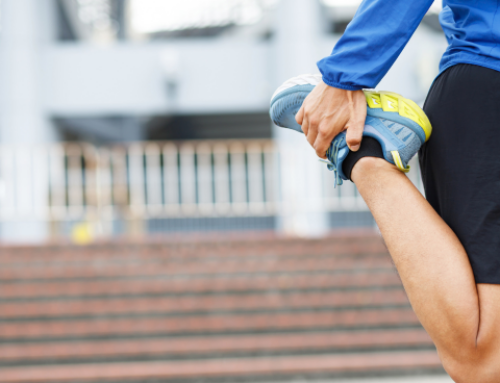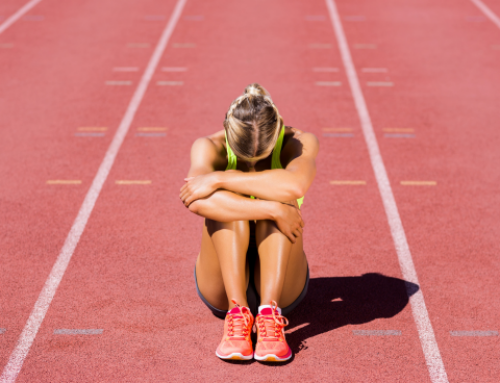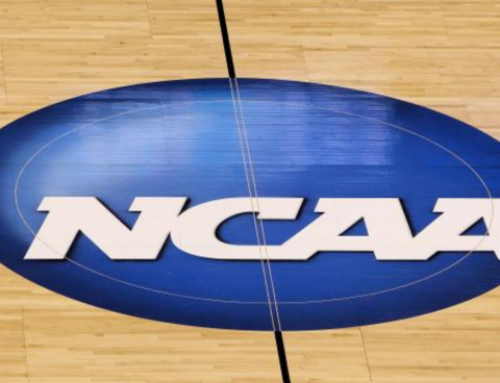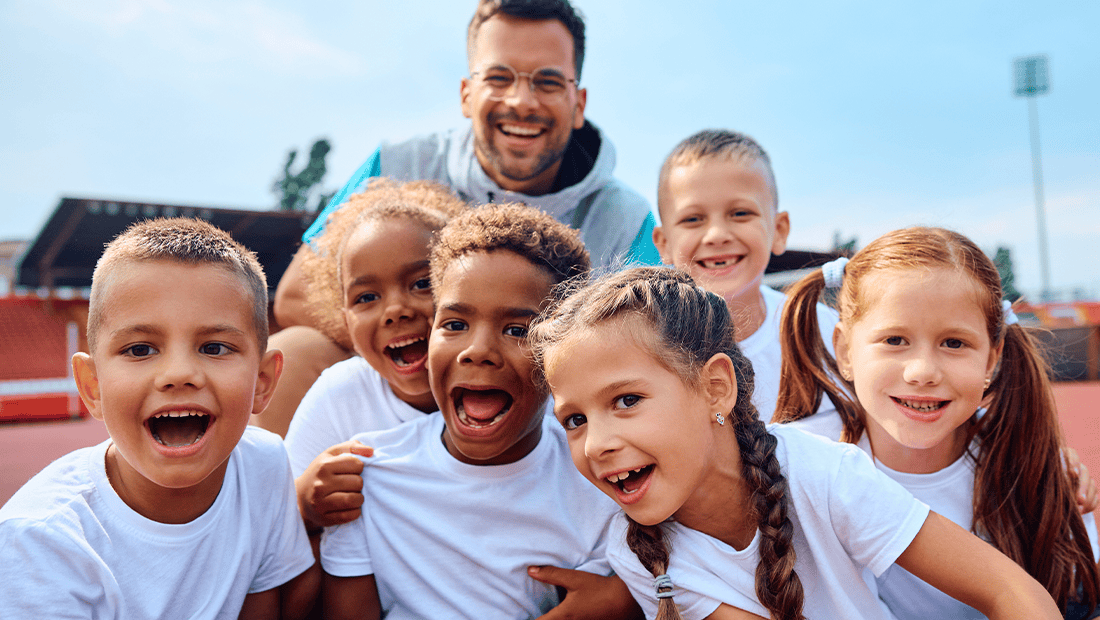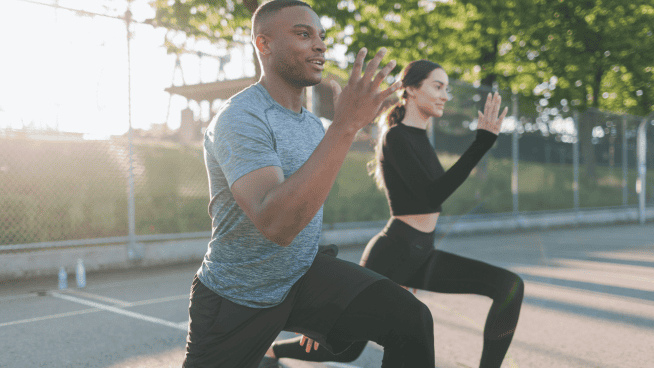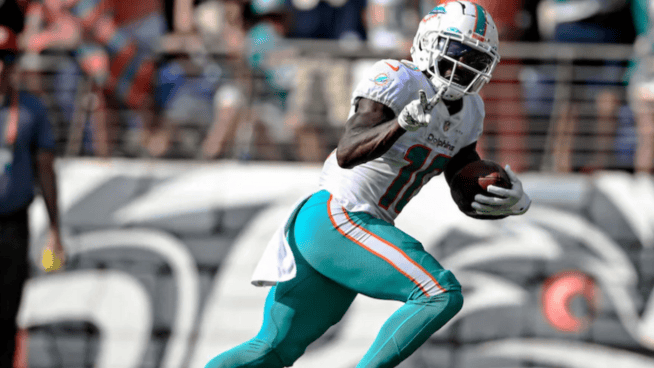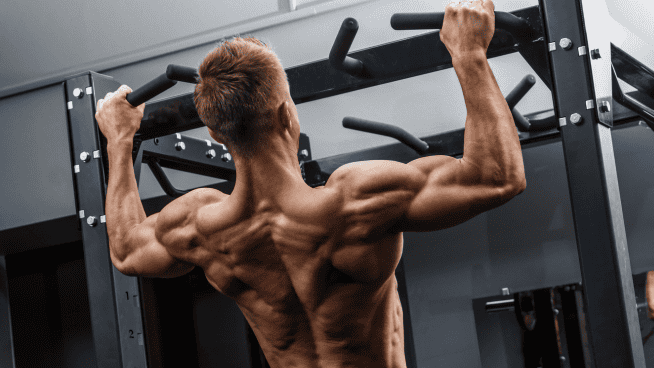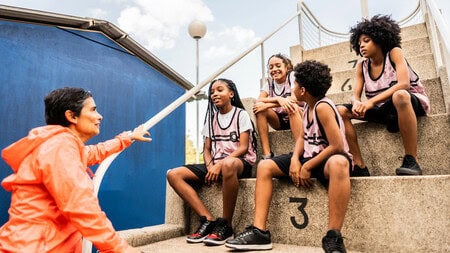The top priority for every youth athlete should be to keep them healthy.
While many coaches have this intention, they do not execute proper general physical preparation into their practices.
General physical preparedness is when an athlete has a solid foundation of balance, coordination, stability, mobility, strength, power, and speed – all tools that equip youth athletes to handle the rigorous demands of their sport and execute sport-specific movements at an elite level. In today’s youth sports climate, everyone is doing the opposite, with the sport-specific skill training coming first, while the physical preparation coming last, or worse yet, not happening at all.
The basic motor skills – jumping, landing, marching, skipping, etc. – need to be repeated repeatedly so kids can load or perform movements under-speed without any imbalances and deficits. The most common example of basic motor skills not being addressed enough in youth is most kids aren’t able to skip with coordination and rhythm. Since these are the foundation to maximal velocity, a young athlete cannot optimize his speed potential.
The movement patterns – squatting, pulling, pushing, hinging, and carrying – need to be reinforced year-round so kids can master bodyweight resistance safely, then progress to weighted movements to bolster their strength truly.
Beyond the physical aspect of injury prevention, the mental aspect needs just as much love. To stay in the game longer, coaches must integrate physical and mental components into their training sessions and teach kids to blend their bodies and minds.
Three Simple Ways To Stay In The Game Longer:
Resistance Train Year-Round
This is non-negotiable and needs to be pushed by adults – both coaches and parents, and directors of youth clubs. The ACL epidemic, especially, is becoming more alarming. The rate of ACL tears is rising, with the sharpest increase seen in females aged 13-17 who, over the last 13 years, has experienced a 59 percent increase in the number of required reconstruction procedures, according to a new study published in the Journal of the American Medical Association (JAMA) Pediatrics. U.S. Soccer even states that young girls are 4-8 times more likely to tear their ACL due to anatomical structure, muscle imbalances, and lack of proper neuromuscular training.
The research is endless, and it should ring the alarm for incorporating more resistance training to improve muscle imbalances, proprioception, and strength. Most non-contact ACL injuries are caused by an inability to absorb force when pumping the brakes or performing a sharp change of direction and jumping movements. These movements are eccentric, with the muscles rapidly lengthening. They are the most taxing to the nervous system, and if the muscles aren’t durable enough to handle these movements, the force goes straight to the joints and ligaments. Poor core stability, landing with a heel strike, weak hip abduction strength, and increased knee valgus also contribute to increased ACL injury risk in young athletes, so resistance training must be approached through the holistic, total human body lens.
Stop Icing and Stretching as Recovery
Anytime a young athlete is sore, or in pain, coaches are quick to say, “ice” or “go stretch!” or “go take a pill!” These are the worst suggestions and should be taken out of every recovery program. I know it sounds wild, but what’s wilder is these solutions enable a quick fix, instant gratification behavior and don’t address the root cause of muscle soreness. Too, they do not repair the tissue, nor do they prepare it to be more durable come next competition and tough training.
Muscle soreness, to that end, is not physiological. It is neurological. When the muscles are sore, it is coming from the brain, putting them in defense and sympathetic mode, so they may feel like they are “locking up” or “tight.” Taking the conversation back to the mind-body connection, youth athlete’s brains play the biggest role in their recovery regimen. The human nervous system needs to enter the “rest and digest” phase for muscles to relax. This can be done through meditation and focus on a five-second inhale, with a three-second exhale to tap into parasympathetic mode.
Proper sleep hygiene is the icing on the recovery cake. Most muscle and mind recovery happens during sleep, with deep, slow-wave sleep secreting growth hormone to rebuild the muscles and REM sleep activating the brain to improve learning, information processing, and memory. The International Journal of Sports Medicine suggests clear negative effects of sleep deprivation on performance, including reaction time, accuracy, vigor, submaximal strength, and endurance. Research shows that better sleep (over 8 hours for youth) can positively affect reaction times, mood, sprint times, tennis serve accuracy, swim turns, kick stroke efficiency. According to the Orthopedic Journal of Sports Medicine, it can also reduce the chance of injury. Adolescents who chronically sleep less than 8 hours per night, or have frequent nighttime awakenings, are more likely to experience sports or musculoskeletal injuries.
Knowing the research is plentiful on the importance of sleep, what can coaches do?
Start having weekly discussions with athletes about how to alleviate sleep deprivation. A few pointers:
- Dim lights 60 minutes before bed
- Get over one hour of sun exposure during the day
- Slow down breathing and meditate before bed
- Get off tech 60-120 minutes before bed
Make time for Leisure and Play.
More research is coming out about the brain’s role in lower extremity injuries. The inability to quickly process information and react is causing a lot of faulty biomechanics (excessive knee valgus, shifting trunk, unstable ankles). It is worth pondering, ‘have we been wrong all along with agility?’
The answer is yes.
When you observe self-proclaimed ‘agility’ coaches social media, you see a series of rehearsed drills that are grossly over-coached, so it makes sense why our young athletes have poor reactivity and lack awareness of their bodies in space. They are always given the answers, and they are not put in a spontaneous environment that is harder than the competition. Agility is the combination of the change of direction skill with the unpredictable thrill, and it needs to be intense, oftentimes, a totally new environment other than primary sport. This is why for soccer players, I suggest they play Handball, Dodgeball, and various high intensity, small-sided games that force them to react, shuffle, turn, twist, all while keeping their eyes up and heads on a swivel.
Adding onto the importance of play outside primary sport, after the COVID lockdowns, I saw a reoccurring theme with some of my athletes. The ones who got injured upon return to play were the ones who stayed inside the entire year, didn’t see their friends, and didn’t get any unstructured play. It did not matter how strong they were from my strength program because their minds could not jump into the spontaneity and intensity of sport due to the lack of free play outdoors for a year. This is not to judge the parents’ choice by any means, but it is something to ponder deeply. Is play with others what humans need to thrive, physically and mentally?
In a study done by Smith et al., those with ACL injury displayed significantly lower scores on visual and verbal memory sections and a lower total score. Another study suggests that errors in judgment or unanticipated stimuli cause a loss of situational awarenes. If the brain’s executive functioning cannot successfully negotiate the rapidly changing environmental conditions, it causes a loss of neuromuscular control.
In the book Play by doctor Stuart Brown, he reinforces how crucial it is to have leisure in one’s left to promote brain growth, build new neural connections and, be better at processing information. He defines Play as no rules, no supervision, no end goal, but rather, a flow state that invigorates the soul. The best athletes are the ones who can enter this state of presence, and evade anxiety and overthinking, and move their bodies with ease and grace.
There is something to this brain power concept. Sure, muscles can be strong to handle forces, but are brains strong enough to handle uncertainty? Both play a role in staying healthy for the length of a sports career.
The best way to stay in the game longer is to look at the big picture and see the youth athlete as a human who must function through the dance between the body and mind.
Read More:
RECOMMENDED FOR YOU
MOST POPULAR
The top priority for every youth athlete should be to keep them healthy.
While many coaches have this intention, they do not execute proper general physical preparation into their practices.
General physical preparedness is when an athlete has a solid foundation of balance, coordination, stability, mobility, strength, power, and speed – all tools that equip youth athletes to handle the rigorous demands of their sport and execute sport-specific movements at an elite level. In today’s youth sports climate, everyone is doing the opposite, with the sport-specific skill training coming first, while the physical preparation coming last, or worse yet, not happening at all.
The basic motor skills – jumping, landing, marching, skipping, etc. – need to be repeated repeatedly so kids can load or perform movements under-speed without any imbalances and deficits. The most common example of basic motor skills not being addressed enough in youth is most kids aren’t able to skip with coordination and rhythm. Since these are the foundation to maximal velocity, a young athlete cannot optimize his speed potential.
The movement patterns – squatting, pulling, pushing, hinging, and carrying – need to be reinforced year-round so kids can master bodyweight resistance safely, then progress to weighted movements to bolster their strength truly.
Beyond the physical aspect of injury prevention, the mental aspect needs just as much love. To stay in the game longer, coaches must integrate physical and mental components into their training sessions and teach kids to blend their bodies and minds.
Three Simple Ways To Stay In The Game Longer:
Resistance Train Year-Round
This is non-negotiable and needs to be pushed by adults – both coaches and parents, and directors of youth clubs. The ACL epidemic, especially, is becoming more alarming. The rate of ACL tears is rising, with the sharpest increase seen in females aged 13-17 who, over the last 13 years, has experienced a 59 percent increase in the number of required reconstruction procedures, according to a new study published in the Journal of the American Medical Association (JAMA) Pediatrics. U.S. Soccer even states that young girls are 4-8 times more likely to tear their ACL due to anatomical structure, muscle imbalances, and lack of proper neuromuscular training.
The research is endless, and it should ring the alarm for incorporating more resistance training to improve muscle imbalances, proprioception, and strength. Most non-contact ACL injuries are caused by an inability to absorb force when pumping the brakes or performing a sharp change of direction and jumping movements. These movements are eccentric, with the muscles rapidly lengthening. They are the most taxing to the nervous system, and if the muscles aren’t durable enough to handle these movements, the force goes straight to the joints and ligaments. Poor core stability, landing with a heel strike, weak hip abduction strength, and increased knee valgus also contribute to increased ACL injury risk in young athletes, so resistance training must be approached through the holistic, total human body lens.
Stop Icing and Stretching as Recovery
Anytime a young athlete is sore, or in pain, coaches are quick to say, “ice” or “go stretch!” or “go take a pill!” These are the worst suggestions and should be taken out of every recovery program. I know it sounds wild, but what’s wilder is these solutions enable a quick fix, instant gratification behavior and don’t address the root cause of muscle soreness. Too, they do not repair the tissue, nor do they prepare it to be more durable come next competition and tough training.
Muscle soreness, to that end, is not physiological. It is neurological. When the muscles are sore, it is coming from the brain, putting them in defense and sympathetic mode, so they may feel like they are “locking up” or “tight.” Taking the conversation back to the mind-body connection, youth athlete’s brains play the biggest role in their recovery regimen. The human nervous system needs to enter the “rest and digest” phase for muscles to relax. This can be done through meditation and focus on a five-second inhale, with a three-second exhale to tap into parasympathetic mode.
Proper sleep hygiene is the icing on the recovery cake. Most muscle and mind recovery happens during sleep, with deep, slow-wave sleep secreting growth hormone to rebuild the muscles and REM sleep activating the brain to improve learning, information processing, and memory. The International Journal of Sports Medicine suggests clear negative effects of sleep deprivation on performance, including reaction time, accuracy, vigor, submaximal strength, and endurance. Research shows that better sleep (over 8 hours for youth) can positively affect reaction times, mood, sprint times, tennis serve accuracy, swim turns, kick stroke efficiency. According to the Orthopedic Journal of Sports Medicine, it can also reduce the chance of injury. Adolescents who chronically sleep less than 8 hours per night, or have frequent nighttime awakenings, are more likely to experience sports or musculoskeletal injuries.
Knowing the research is plentiful on the importance of sleep, what can coaches do?
Start having weekly discussions with athletes about how to alleviate sleep deprivation. A few pointers:
- Dim lights 60 minutes before bed
- Get over one hour of sun exposure during the day
- Slow down breathing and meditate before bed
- Get off tech 60-120 minutes before bed
Make time for Leisure and Play.
More research is coming out about the brain’s role in lower extremity injuries. The inability to quickly process information and react is causing a lot of faulty biomechanics (excessive knee valgus, shifting trunk, unstable ankles). It is worth pondering, ‘have we been wrong all along with agility?’
The answer is yes.
When you observe self-proclaimed ‘agility’ coaches social media, you see a series of rehearsed drills that are grossly over-coached, so it makes sense why our young athletes have poor reactivity and lack awareness of their bodies in space. They are always given the answers, and they are not put in a spontaneous environment that is harder than the competition. Agility is the combination of the change of direction skill with the unpredictable thrill, and it needs to be intense, oftentimes, a totally new environment other than primary sport. This is why for soccer players, I suggest they play Handball, Dodgeball, and various high intensity, small-sided games that force them to react, shuffle, turn, twist, all while keeping their eyes up and heads on a swivel.
Adding onto the importance of play outside primary sport, after the COVID lockdowns, I saw a reoccurring theme with some of my athletes. The ones who got injured upon return to play were the ones who stayed inside the entire year, didn’t see their friends, and didn’t get any unstructured play. It did not matter how strong they were from my strength program because their minds could not jump into the spontaneity and intensity of sport due to the lack of free play outdoors for a year. This is not to judge the parents’ choice by any means, but it is something to ponder deeply. Is play with others what humans need to thrive, physically and mentally?
In a study done by Smith et al., those with ACL injury displayed significantly lower scores on visual and verbal memory sections and a lower total score. Another study suggests that errors in judgment or unanticipated stimuli cause a loss of situational awarenes. If the brain’s executive functioning cannot successfully negotiate the rapidly changing environmental conditions, it causes a loss of neuromuscular control.
In the book Play by doctor Stuart Brown, he reinforces how crucial it is to have leisure in one’s left to promote brain growth, build new neural connections and, be better at processing information. He defines Play as no rules, no supervision, no end goal, but rather, a flow state that invigorates the soul. The best athletes are the ones who can enter this state of presence, and evade anxiety and overthinking, and move their bodies with ease and grace.
There is something to this brain power concept. Sure, muscles can be strong to handle forces, but are brains strong enough to handle uncertainty? Both play a role in staying healthy for the length of a sports career.
The best way to stay in the game longer is to look at the big picture and see the youth athlete as a human who must function through the dance between the body and mind.
Read More:


